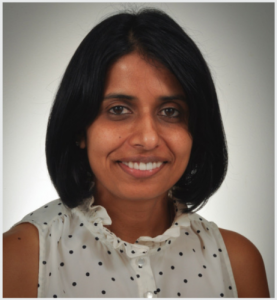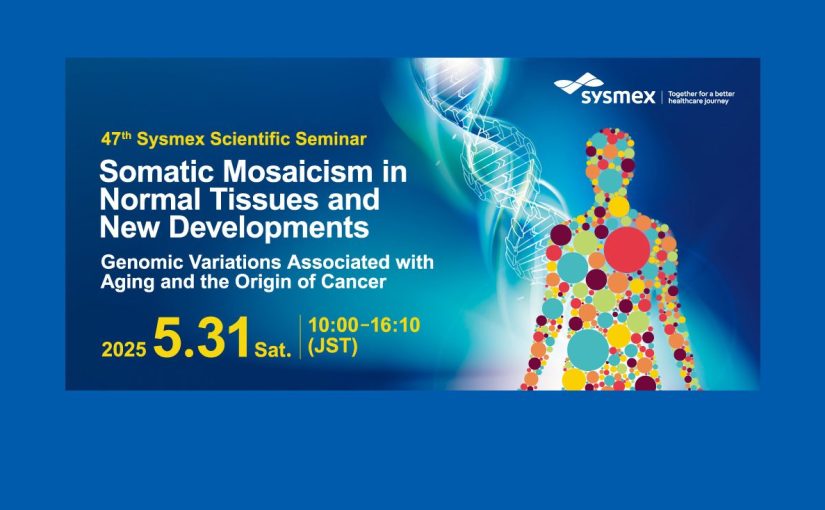Haematological Malignancies : Bench to Bedside Webinar Series
Topic 1: Sysmex XN WBC Research Parameter: From bench to bedside
Speaker

Professor. Tahir Sultan Shamsi is a pioneer of bone marrow transplantation (BMT) in Pakistan. His main research interest is haematology analysers’ cell population data, its use in artificial neural network development, and its use in routine diagnosis. Dr Shamsi has over 143 research papers published. For his work, he was awarded 8 national and international grants. Dr Shamsi has supervised 39 FCPS students, and 22 students in post-fellowship training in haematology and bone marrow transplantation. He has supervised seven PhD students working on various research areas in Pakistani population.
Abstract of Lecture
Currently available haematology analysers generate a huge dataset while performing a complete blood count on a blood sample. Sysmex XN Series machines generate reportable parameters, non-reportable data on the front screen of the machine’s computer screen, 2-D images of white blood differential (WDF), nucleated red cells (WNR), white blood precursor cells (WPC) scatterplots. On the backhand screens, a huge dataset of WBC research parameters is generated for each type of white blood cell. These parameters are based on their flowcytometry values in 3-dimensional axis. Fluorescence intensity for neutrophil, lymphocyte, and monocyte are NE-SFL, LY-Y and MO-Y are measured respectively, while distribution width for neutrophil, lymphocyte and monocyte are NE-WY, LY-WY and MO-WY respectively. Using these research parameters individually may not have enough statistical power or predictive value to classify a cell or identify a disease, but using multi parametric deep machine learning, certainly has the potential to diagnose a white blood cell disorder. It’s a possibility that these parameters can be of some prognostic value. These multi parameter big data includes WBC reportable, and research parameters, WDF and WPC images, and patient’s demographic as well as some clinical data. Our group has utilised this in predicting the diagnosis of APML, as well differentiating some other white blood cell disorders effectively. Using artificial intelligence based big data analysis integration in haematology analysers will enable us to use this information from the laboratory bench to patients’ beside and will help in shortening the time taken to diagnose blood disorders.
Topic 2: WBC Morphometric Parameters: towards complementation of the Static Leucocyte Differential Count Reporting
Speaker

Rana Zeeshan Haider did his Post-doctoral training in TUBITAK-Marmara Research Center, Kocaeli-Turkey and received his PhD (Haematology) from National Institute of Blood Disease (NIBD), Karachi, Pakistan. He was awarded the Gold Medal from Baqai Medical University, Karachi for his Master program. Currently, he is an Assistant Professor and Scientist at Baqai Institute of Haematology, Baqai Medical University and NIBD respectively. His research interests include machine learning, predictive modelling, and development of classifier for routine clinical haematology-oncology practices.
Abstract of Lecture
The purview of modern haematology analysers aptly typifies the clinical status of the patient’s hematologic system. The clinical utility of modern haematology analysers in real time diagnostic fashion is still confined, largely because of gaps in our proficiency to interpret measurements (parameters) toward static reporting. Beyond, these blood-counting machines are technologically great advanced and generate high-throughput together with high-resolution measurements for every single white blood cell (WBC) in total of tens of hundreds of cells. In addition to routine WBC differential counts these sophisticated measurements backend few extended (morphometric) parameters, generally termed ‘cell population data (CPD)’: assessment of DNA/RNA content by side fluoresce light, measurement of the size through forward scatter light, and reckoning of granulocytic content (cytoplasmic complexity) via side scatter light which interpreted as mean values or distribution width (current magnitude of variation in 1 WBC to the next). This multivariate feature promises great predictive and individuate relevance in diagnosis and follow-up of common disorders. Nevertheless, the WBC population in peripheral blood is invariably dynamic not only on both quantitative side (cytosis / cytopenia in total or in any single differential proportion) and qualitative’ end (hypo/hyper-granular or RNA/DNA content/maturity), but also through appearance of immature and or neoplastic cells in circulation. The WBC CPD parameters: automated morphometric items are diagnostically quantitative of WBCs dynamics. The WBCs dynamics quantification can complement the static white cells differential counts by not just authentication of normal (six part) differential counts but also through flagging of presence of immature/abnormal WBC (if any). The flagging of immature/abnormal WBCs can be smartly and confidently stepped forward to differentiate abnormal cells providing that we have trained our computers (using artificial intelligence tools) by these WBCs morphometric items. Potentially, this exercise will grant static differential counts by avoiding false counting/over-fitting, delay due to shared WBCs’ scatter areas, and prolonged turnaround time of manual CPD interpretation. Above all, more subtle clinical differentiations and prognostic entities can be concluded when these advanced morphometric items are viewed with routine CBC parameters. Lastly, knowledge of WBCs dynamics through various morphometric parameters would cater correlative information on the individual’s haematologic system, aiding more comprehensive reporting.
Moderator

Indonesia, Jakarta.
Speaker

Dr. Dhanlaxmi Shetty is a cytogeneticist. Currently she is the Scientific Officer-E and Officer-in-charge at the Cancer Cytogenetics Department, Advanced Centre for Treatment Research and Education in Cancer (ACTREC), Tata Memorial Centre.
Dr. Shetty has over 10 years of experience in pre-natal, post-natal and cancer genetics from three NABL and CAP accredited laboratories. She is very passionate towards Human Genetics and is involved in various teaching and training activities for graduate and post graduate students.
Abstract of Lecture
Cytogenetics is now considered a mandatory investigation in haematological malignancies as ~70% of patients with acute myeloid leukaemia (AML); 80% of patients with acute lymphoblastic leukaemia (ALL) and chronic lymphoblastic leukemia (CLL); 50% of patients with multiple myeloma (MM) and 90% of chronic myeloid leukemia (CML) harbor chromosomal aberrations. Majority of these abnormalities are recurrent and independent prognostic markers thereby assisting in risk stratification of patients and planning therapy. Cytogenetics is essential for providing definitive diagnosis of MPN and MDS while being a valuable tool for monitoring engraftment after bone marrow transplantation in sex mismatch cases. Likewise at follow-up it assists in determining the disease status and clonal evolution. Conventional cytogenetics also occasionally stands superior to higher molecular technologies, in that, it can uncover variants and novel/rare abnormalities that remain out of scope for most targeted panel based molecular techniques. Moreover, cytogenetics has been recommended in the diagnostic algorithm for haemato-lymphoid malignancies in the WHO 2008 & 2016, ELN 2017 & ELN 2020; NCCN 2018, ESMO, ASCO; IPSS & IPSS-R and m SMART. The current talk will present diagnostic markers and their prognostic relevance along with case reports highlighting the significance of cytogenetics in diagnosis and management of leukemia patients.
Speaker

Dr. Kirthi R. Kumar MD., PhD.
Medical Director, Hematopathology Laboratory, Medical City Dallas/Medical City Children’s Hospital, Dallas, USA
Objectives of Lecture
- Understand the classification of plasma cell neoplasms based on WHO guidelines
- Identify normal versus abnormal plasma cell populations through immunophenotyping analysis
- Examine how morphologic and flow cytometric data are integrated to evaluate measurable residual disease
Abstract of Lecture
Flow cytometry has become an integral tool in the work-up of plasma cell neoplasms. Case study review will demonstrate the clinical utility of this technology in the identification of abnormal plasma cell populations. The discussion will highlight the benefits of flow cytometry to further guide diagnostic classification and treatment. The role of flow cytometry in measurable residual disease testing will also be discussed.
We hoped you have enjoyed the webinar and gained new insights!
May we request your time for a short survey?


![[VOD AVAILABLE] Optimising Lupus Anticoagulant Testing: From Algorithms to Guidelines](https://www.sysmex-ap.com/wp-content/uploads/2025/05/Red_Blood_Cells_and_Platelets-scaled-e1749118671948-825x510.jpg)

![[VOD AVAILABLE] MINDS TOGETHER – Sysmex Knowledge Congregation Webinar on Anaemia & Haematuria Early Diagnosis Using Automation](https://www.sysmex-ap.com/wp-content/uploads/2022/08/3d_illustration_of_red_blood_cells_1-825x510.jpg)
![[VOD AVAILABLE] 9th International Sysmex Scientific Seminar](https://www.sysmex-ap.com/wp-content/uploads/2024/09/ISSS-2024-background-825x510.jpg)